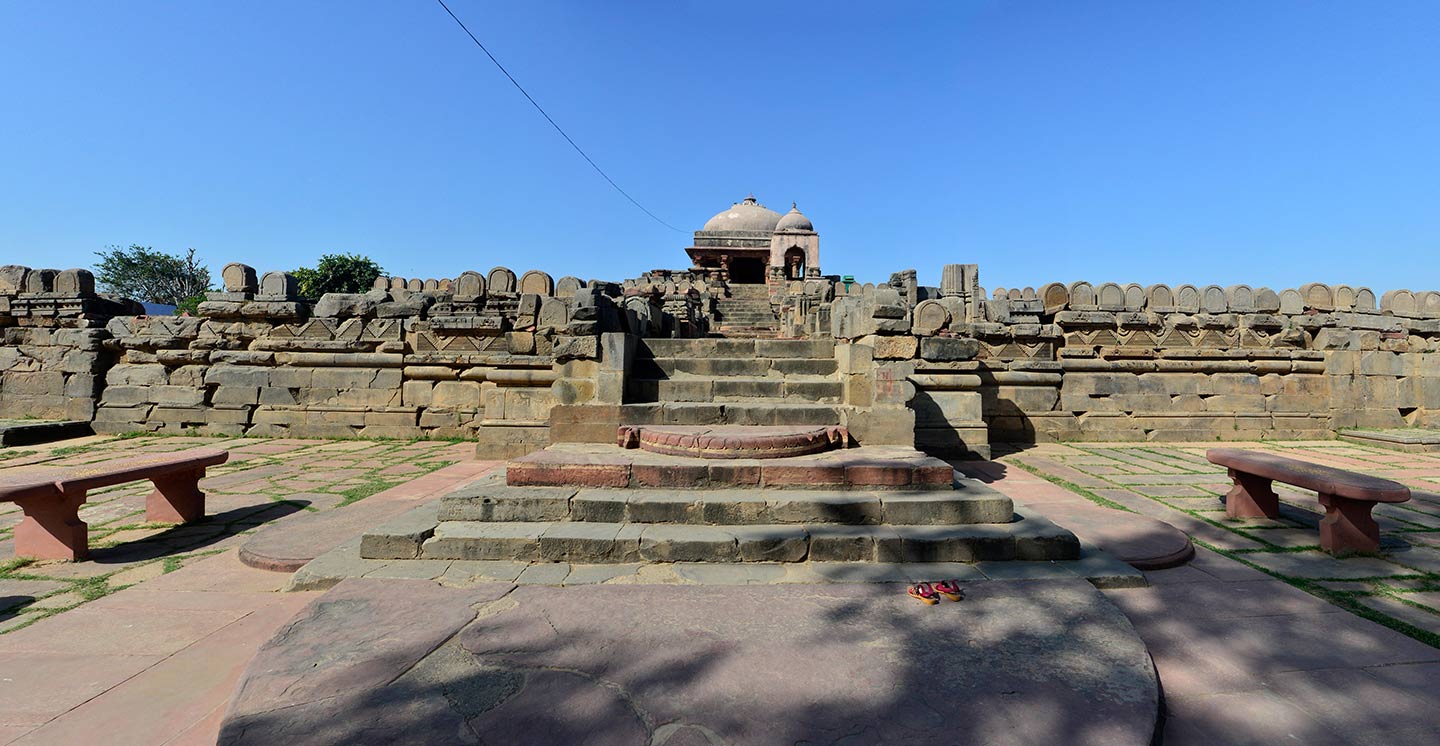Harshatmata Temple of Abhaneri
Dausa, Rajasthan
By Srija Sahay

The Harshatmata Temple in Abhaneri, situated off the Delhi-Jaipur highway—six kilometres from the Bandikui railway station—in the Dausa district of Rajasthan, dates back to the 9th century CE. The temple was built under the reign of the Shakambhari Chahamanas, who were the feudatories of the Gurjara-Pratiharas. The temple stands as an example of the Maha-Maru style architecture in the region. The temple is dedicated to the worship of Harshat Mata, or Harasiddhi Devi who is considered the ishta (main or presiding deity) of Abhaneri. Historically, the temple has been associated with various narratives, including the love story of Raja Chand and Permala, which echoes through bardic tales and colonial records.
Iconographically, the temple presents a fascinating blend of sects and beliefs. While the presence of Pancharatra elements suggests Vaikuntha Vishnu worship, the placement of deities deviates from traditional conventions, prompting scholarly debates on its significance. Despite being an active site, the original temple structure lies in ruins. Although it is commonly believed to have been destroyed by the Mughal Emperor Aurangzeb, no evidence has been found supporting any local claims. The temple's sculptural repertoire, albeit scattered across museums, private collections, and at the adjacent step well known as Chand Baori, offers insights into courtly life, religious practices, and mythological narratives of the time. Scenes depicting Krishna-Lila, avatars of Vishnu, and daily worship rituals adorn its walls.
The temple serves as a focal point for socio-religious activities, with festivals like Navratri and Jal-Jhulani Gyaras drawing devotees from around the region. The intricate intertwining of rituals, beliefs, and local customs underscores the temple's living status as a cherished community landmark. However, challenges persist in preserving the temple and its sculptural fragments, necessitating a holistic approach that acknowledges its historical, social, and cultural significance. Engagement with local narratives and collaborative conservation efforts are essential to ensure the temple's legacy endures for generations to come.
Explore the module on the Harshatmata Temple comprising the following content elements:
c. Photoessay